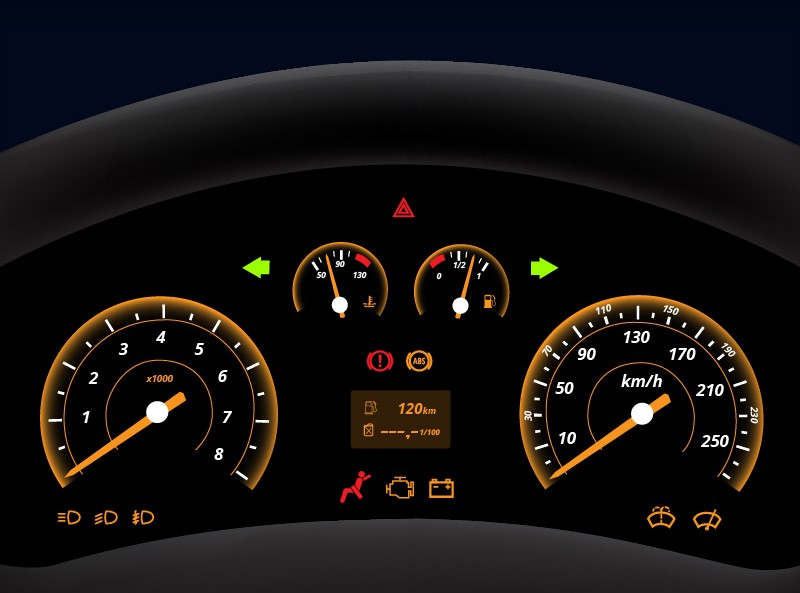The brake system is one of the most critical safety features in your vehicle. It is essential to be aware of any issues that may arise with your brakes to ensure your safety and the safety of others on the road. Brake warning lights on your dashboard are designed to alert you to potential problems with your braking system. Understanding the meaning behind these warning lights can help you take prompt action and address any issues before they become more severe. In this article, we will discuss the common brake warning lights found on your dashboard and what they indicate.
- Brake Fluid Warning Light:
The brake fluid warning light typically resembles an exclamation mark inside a circle, surrounded by parentheses. When this light illuminates, it indicates a low brake fluid level in your brake reservoir. Low brake fluid can compromise your braking performance and may be due to a leak or worn brake pads. If you see this warning light, it is crucial to check your brake fluid level and top it up if necessary. However, it is essential to have your brake system inspected by a professional to determine and address the underlying cause.
- ABS Warning Light:
The ABS (Anti-lock Braking System) warning light usually appears as the letters “ABS” inside a circle. This light indicates a problem with the ABS system, which is responsible for preventing your wheels from locking up during sudden braking, allowing for better control and maneuverability. When the ABS warning light is illuminated, it suggests a fault within the ABS system. While your brakes may still function, it is advisable to have the system checked by a qualified technician to identify and rectify the issue.
- Brake Pad Warning Light:
The brake pad warning light is depicted as a circle with parentheses on each side, symbolizing brake pads. When this light illuminates, it indicates that your brake pads are worn and nearing the end of their lifespan. Some vehicles have a sensor embedded within the brake pads that triggers the warning light when the pads wear down. Ignoring this warning can lead to diminished braking performance and potential damage to other brake components. It is important to have your brake pads inspected and replaced promptly by a professional.
- Brake System Warning Light:
The brake system warning light varies in appearance but typically resembles an exclamation mark inside a circle or a circle with the word “BRAKE” written inside. This light indicates a problem with the overall brake system, such as a hydraulic failure or a problem with the brake booster. When this light illuminates, it is crucial to have your vehicle inspected by a qualified mechanic as soon as possible to diagnose and resolve the issue.
Understanding the brake warning lights on your vehicle’s dashboard is essential for your safety on the road. Brake warning lights serve as important indicators of potential issues within your braking system. If you observe any of these warning lights, it is crucial to take action promptly. Check your brake fluid level, inspect your brake pads, or have your vehicle inspected by a professional technician, depending on the specific warning light. Regular maintenance and inspections of your brake system can help prevent more significant problems and ensure optimal braking performance. Remember, never ignore brake warning lights, as they are vital for your safety and the safety of others on South African roads.











